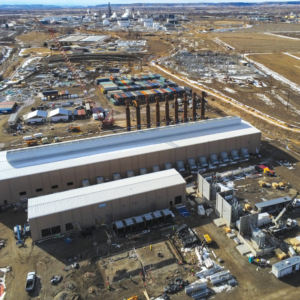American Prairie has announced the purchase of over 1,400 acres of land in two areas. The purchase included tracts situated both near and along the Missouri River. One of the sites is across the Missouri River from the Lewis and Clark campsite at Slaughter River.
A petition submitted by Lincoln County commissioners to ease selenium standards in Lake Koocanusa met resistance from a group opposed to the petition. The approval of the petition would raise the maximum level of dissolved selenium in the lake. Selenium is considered an essential nutrient; large amounts of it can lead to neurological and reproductive defects in fish. In humans, excess levels of selenium can cause gastrointestinal distress, organ failure and, in rare cases, death.
The Missoula County Commissioners approved a dredging project recently to remove sediment buildup from a boating and float plane dock in Seeley Lake. The project will remove 600 cubic yards of lakebed to restore space for boats and planes along the shoreline of Lindey’s Prime Steakhouse. Owners of the business said the project is needed to keep the entire marina open. Dredging projects remove sediment, soil or debris from the bottom of a body of water.
Butte-Silver Bow county officials have gotten an OK to seek buyers for its Business Development Center. The building located at 305 W. Mercury St. is costing the county more than it’s collecting in rents. County officials have drawn up a “request for proposals,” or RFP, seeking potential buyers of the building. They would have to honor existing leases, at least until they expired, and it would cost a minimum of $450,000.
This year, Townsend’s health care facility, now known as Billings Clinic Broadwater, marks 120 years of providing high-quality care to Broadwater County and surrounding communities. Like many rural hospitals, the facility has faced its share of challenges.
The Junction Pipeline Company doesn’t just want to build a 30-inch diameter, roughly 30-mile long oil pipeline from Toole County to Canada they want to do it “rapidly.” They plan to complete phase one of the pipeline in the next three to four years. The project would be a $5 billion investment. The pipeline would move oil sands crude oil to refineries in the US.
The steering committee directing use of a multimillion dollar grant for local revitalization efforts has approached the City of Glendive with a proposal to collaborate on a project in downtown Glendive. The goal is to help get travelers off Interstate 94 to spend more time exploring the local region. Several community development specialists submitted a proposal to the city’s Finance, Utilities, Property and Recreation Committee recently regarding plans grant dollars awarded by the Montana Department of Commerce recently.
A new Taco Bell, located on 3rd Avenue West in Williston Square opened on Aug. 13.
Valley Cinema in Glasgow is closed until a manager is hired and trained. JR Rasmussen has retired after 31 years as manager. The Valley Cinemas in Glasgow was closed on Aug. 8. Polson Theatre, the owner of Valley Cinema, stated the sudden closure is not what they would have chosen either, however it was how the circumstances unfolded. They have no intention of closing the movie theatre permanently.
A group of local organizations, businesses and volunteers recently completed the official first installment of a plan for an interstate trail network that will connect the Terry Badlands to North Dakota’s Maah Daah Hey Trail. Construction on a roughly $50,000 covered pavilion and signage along Ten Mile Road was completed recently to mark the west end of the Badlands to Badlands (B2B) Trail System.
Missoula County Sheriff’s Office has moved into a new building at 2415 Mullan Road, across from the detention center. This means all walk-ins, fingerprinting and weapons permits will be handled at the new location, with other services remaining at the county courthouse on West Broadway.
The Missoula City Council has approved a 3.4% tax increase for its fiscal year 2026 budget. City officials are attempting to relieve property tax concerns and balance the city’s structural deficit. The council unanimously approved the increase. Missoula staffers are credited with finding ways to save money through restructuring and closing the Johnson Street Shelter.
Sabey Data Centers flew leaders from Butte-Silver Bow County to Quincy, Washington to showcase its data facility there. Butte-Silver Bow’s chief executive reported to commissioners that Sabey flew him and the Community Development Director to Quincy in a private jet to tour the data center. Anaconda-Deer Lodge County Chief Executive and his planning director also made the trip, as did three officials for NorthWestern Energy.
The U.S. Fish and Wildlife Service under the Trump administration wants to re-consider removing protections the agency automatically applies to threatened species, like grizzly bears and bull trout, just as they are applied for more critically endangered species. The move to nix “blanket” rules under the Endangered Species Act is the latest by the administration to potentially reverse Biden-era changes designed to keep the protections in place and safeguard threatened species from being hunted or harassed.
Originally established as “Honey Bee Awareness Day” by the U.S. Department of Agriculture in 2009, the holiday recognizes the crucial role that more than 2.99 million bee colonies in the U.S. play in pollinating more than $15 billion worth of crops, in addition to producing honey and beeswax.National Honey Bee Day was celebrated August 20, 2025. Originally established as “Honey Bee Awareness Day” by the U.S. Department of Agriculture in 2009, the holiday recognizes the crucial role that more than 2.99 million bee colonies in the U.S. The Honey Bees pollinate more than $15 billion worth of crops. Additionally they produce honey and beeswax. In Montana there is a new law expanding opportunities for everyday Montanans to engage in beekeeping.
Flathead County commissioners have approved a 1,700-acre deluxe resort in Lakeside. In the discussion leading up to the unanimous vote, a Commissioner pointed out a multitude of job opportunities to come out of the project’s development. The members-only resort backed by Arizona-based Discovery Land Company is planned to include two golf courses, a fitness center, spa, restaurants and 359 residential lots set to be built west of U.S. 93 near Blacktail Mountain. The project is set to be completed in March 2028. Discovery Land Company operates three other resorts in Montana, Yellowstone Club in Big Sky, Crazy Mountain Ranch in Shields Valley and Iron Horse in Whitefish.
Sewer rates in Lakeside are set to increase by 61.7%. Since 2022, the Lakeside County Water and Sewer Board has imposed an annual 5% increase in sewer rates to cover the cost of expanding its 40-year-old wastewater treatment system. Sewer rates will go up by 61.7% this year with a new monthly flat rate of $78.62, starting in September. For non-compliance users, the monthly flat rate will go up by 37.9% to $109.
The Larch House, a luxury boutique hotel, is slated to open in Whitefish in October. The building is located on Railway Street between Baker and Lupfer avenues. The Larch House features 10 buildings that house 39 rooms. Larch House suites are in the main building, as are the Larch House Queen rooms. All rooms offer high-end amenities. Nightly rates start at around $250 during shoulder season and may reach up to $1,400 per night during peak summer months.
Originally from Northern Washington, Andrea Emde opened Base Vitality, off U.S. 93 in North Kalispell, on April 1. Emde says she grew up with a holistic view of health. Combining both her chiropractic and naturopathic expertise, Emde aims to provide a holistic approach to ensuring her patients are healthy.
Montana’s Fish and Wildlife Commission has implemented a statewide wolf quota. There will be a statewide quota of 452 wolves that can be hunted or trapped in Montana for the 2025-26 season and no regional quotas except for in Region 3 in southwest Montana, where wolf harvest will be capped at 60, and in two special wolf management units north of Yellowstone National Park.
Prairie County posted the lowest unemployment rate in Montana for July. The rate was 1.3%, according to the Montana Department of Labor & Industry. That’s a drop of nearly a full percentage point from last year and reflects steady local job growth.
Thomas Herefords of Gold Creek has been selected as the recipient of the 2025 Montana Leopold Conservation Award. The award honors ranchers, farmers, and forestland owners who go above and beyond in the management of soil health, water quality, and wildlife habitat on working land. Thomas Herefords, owned by Bruce and Tammy Thomas, and Richard and Shirley Thomas, will be presented with the award at the Montana Farm Bureau Annual Convention in November. They receive $10,000 for being selected. Bruce grew up showing and fitting world-class Hereford cattle on the ranch his parents Richard and Shirley Thomas established in 1957.
Six days after the Illinois-based News Media Corporation closed the six publications it owned in Wyoming – in Wheatland, Torrington, Evanston, Pinedale, Kemmerer, Lusk, Lyman and Guernsey — Wyoming newspaper executives Robb and Jen Hicks and Rob Mortimore purchased the newspapers, with the announcement that they and will keep them operating. Hicks has long worked at and run newspapers in Wyoming. He and his wife own and operate the Buffalo Bulletin


